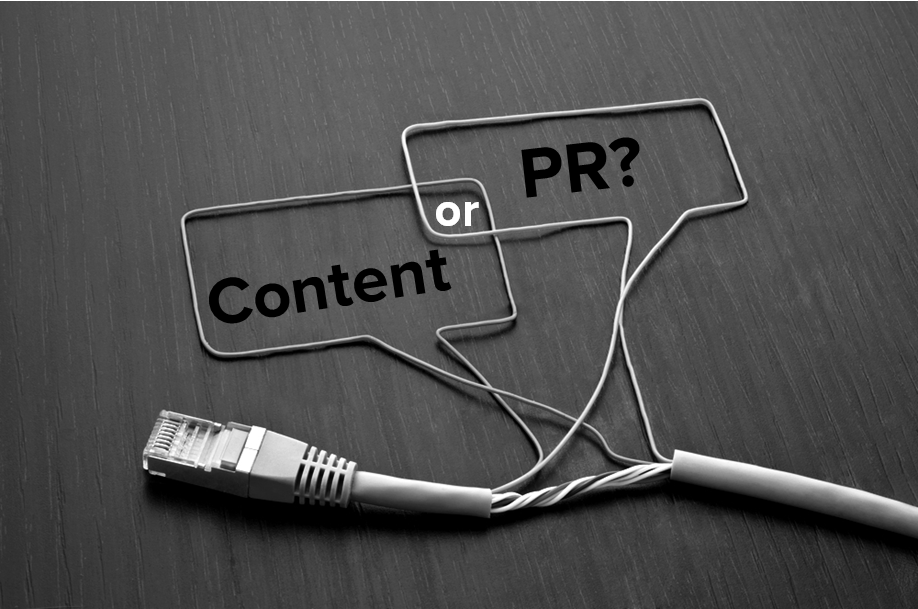Content marketing and public relations strategies can seem similar at a glance, but let’s take a closer look. While there are similarities in what each approach can accomplish, and how they reach their goals, the differences are important to distinguish as well. The better you understand the capabilities of each tool at your disposal, the better you will be able to use them to your benefit.

Alex Danoff, one of Brafton’s San Francisco-based content marketing strategists, recently let us pick his brain about the differences and similarities between PR and content marketing. Before taking on a role in content marketing, Alex spent a few years as a PR coordinator and specialist for a major company. Having spent time working in each field, he shared his insights into the various ways each can benefit a business.
One of the first things he made clear when I spoke with him was this: Content marketing and PR are not mutually exclusive. They share many characteristics and use similar methods, but they also have unique intentions and produce different results. Depending on your goals, the best strategy to employ will vary.
Each tactic has a role to play
Content marketing and PR serve different functions. PR content allows companies to share information about their brand, products and culture while content marketing gives them the platform to demonstrate their thought leadership and expertise in their niche.
“PR certainly has its place in communications and marketing.” – Alex D.
Where do content marketing and PR overlap?
When you boil it down, both content marketing and public relations are communications tools companies employ to position themselves as leaders in their industry and show they can meet the needs of their customers. There are a quite a few blurred lines between the two – a good content marketing strategy often incorporates PR content, and vice versa.
Consider one potential way you could see the two cross paths: If you were to issue a press release for a new product or service, it could then be mentioned and linked to in one or more blog articles on related topics. The overall blog content will remain broader than if you wrote solely about the product. With this approach, you can avoid the dangerous promotional zone where content marketing tends to see less success.
What does content marketing offer that PR does not?
The content marketing approach to communication is typically based more around the user or potential customer than PR content. Content marketing answers questions that real people have and connects them to a product or solution. High quality content is at the core of a good content marketing strategy, and often that means a piece or asset is doing more of a soft sell than shouting from the rooftops that Company X or Product Y is the solution to a user’s problem.
- Find out how one company’s blog traffic jumped up 176 percent when they focused more on content and less on selling.
What does PR offer that content marketing cannot?
PR content typically allows a company the opportunity to more directly promote itself and its products, and it generally does so by targeting the media rather than the general public as its audience. PR content is also able to address unique situations and problems. Crisis communications, for instance, is an important part of companies’ PR repertoire that can address an issue quickly and directly with the goal of minimizing any damage to the brand.
Content is on the rise, but PR won’t disappear
The PR approach to marketing a company has been well-established for years, yet content is growing more relevant than ever. In 2010, the Content Marketing Institute found that 90 percent of companies were using content in their strategies, and just look at how much has changed in the industry since then. The approach has grown more complex, quality has become a priority over quantity and the overall strategies have evolved to keep up with SEO updates and the changing marketplace.
Do you think the rising trend of content will impact the effectiveness of PR?
PR certainly has its place in communications and marketing, particularly if the goal is to have a media outlet or some third-party reproduce or amplify the content. That said, in our digital age there is a lot of content out there, so it’s more and more of a challenge to capture eyes and ears. When you’re appealing directly to consumers and potential customers, using “PR speak” and promoting your brand first and foremost isn’t an effective way of encouraging them to buy your product. That’s the challenge of content marketing – you have to provide your audience a rich experience by offering valuable information and, ideally, solutions to their problems.
Content marketing plays a major role in attracting buyers, yet PR is still viewed as a formidable force in the marketing world. In fact, PR tends to be 80 percent more effective than content marketing in influencing a purchase in the final stage, purchase consideration, according to a recent study by Nielsen and inPowered. This may be due to the fact that the buyer is putting more focus on the products and services than in the initial research stages and is actively seeking out PR content over broader information.
Can content and PR work in tandem?
PR content can certainly play an important part of a content strategy. If a company is looking to enhance its image by talking about its latest contributions to charitable organizations, it will likely be PR content that will tell that story. But a content strategy that’s overly promotional is unlikely to succeed. The company has to produce content that meets its audience in the middle by answering questions and explaining why its product or service is best for them.
A solid content strategy will provide the information potential customers need to move to the next stage of the buyer journey without trying to sell them at every turn. When content becomes more of a sales pitch than a resource, readers will be turned off and less likely to buy.
“Content marketing and PR are not mutually exclusive.” – Alex D.
At the same time, PR content has its place and may sometimes find its way into blog content. For instance, a call-to-action within an article can point readers to a new product release. Relevant company news, such as a business doing something charitable would give its reputation a positive boost.
The key when considering PR and content marketing is to strike the right balance in how and when each is used. Let the content drift too far away from your own goals and you won’t capture the right audience. Keep PR and the brand in mind as you create content to help it stay focused on the bottom line.




